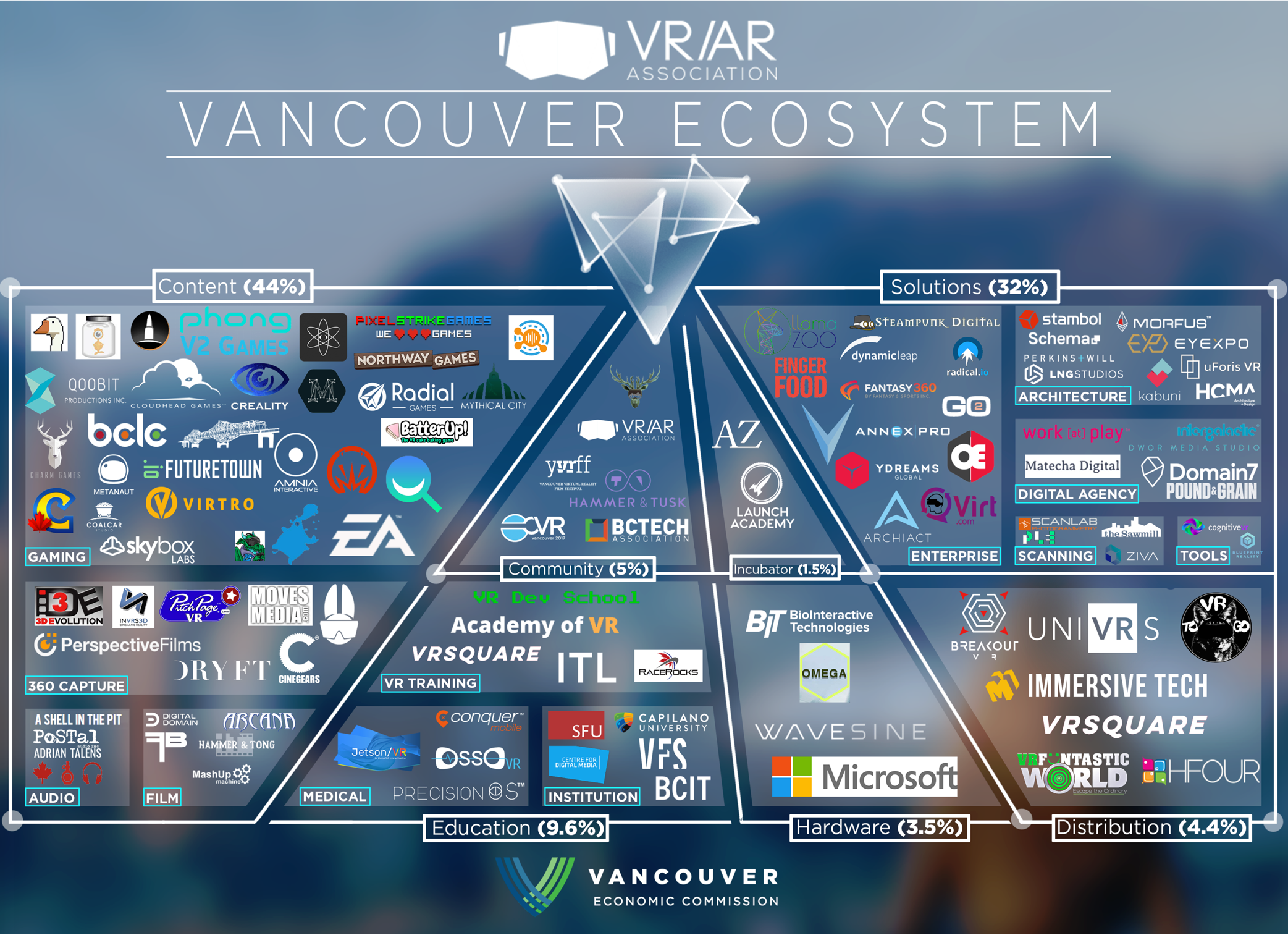
Growth phases of any tech sector are often marked by the emergence of supporting parts. Beyond hardware and software, there’s an additional layer for creative & design talent, tech integrations and agency services. This is where Archiact plays.
The Vancouver VR/AR studio occupies several functions including game publishing (for itself and for outside clients) and enterprise VR integrations. The latter can be for collaboration or productivity; or for brands that want to integrate immersive media into marketing campaigns.
“We want to be open to different areas and ideas because it’s a sort of desert period for VR and AR,” director of BD and partnerships Dan Burgar told ARtillry. “We have different focuses until mass adoption hits, and then we can start focusing on specific business verticals.”
This feeling-out approach is smart for VR and AR’s nascent stages, but involves serving clients with varying levels of tech sophistication, much less VR and AR experience. This makes education the name of the game for Burgar — both a challenge and an opportunity.
“A lot of people still haven’t put on a headset or think it’s just a fun game, so they don’t understand yet how it incorporates into their company,” he said. “Many people I talk to aren’t ready to pull the trigger on an all-out VR/AR strategy, so a lot of it is education.”
Unfilled Spaces

As for specific areas where Archiact is working, one example is Schema, its visualization tool for architecture and design. In partnership with Meta, it helps professionals in these fields collaborate on designs and present them to clients such as real estate companies.
This is a natural fit because architecture, design and real estate tend to be early adopters. They’re not only eager for a competitive edge to win new business, but they’re comfortable with design tools. The collaborative need is there and the work is heavy on 3D visuals.
“They were certainly one of the first industries that we were talking to, and were interested in using the technology,” said Burgar. “It makes a lot of sense to visualize unfilled spaces years before you put the shovel to the ground.”
For similar reasons, Archiact is seeing traction in automotive and training. Healthcare holds opportunities, but also challenges due to regulation. Most of all, Archaict works with companies that adopt AR & VR for the right reasons — not just for image, or to check an item off a list.
“We don’t want to take on products that water down the industry or turn people off to VR,” said Burgar. “Some brands will do something fancy for a couple months then let it sit on the shelf. That’s not what we want to do. We want to build things that are meaningful and solve problems.”
Cascading Effect
Besides a place in the VR and AR value chain, Archiact is carving out a VR/AR community in Vancouver. And the foundation is strong, given Vancouver’s budding status as an immersive computing center, driven by several geographic, academic and professional factors.
“Within a year, Vancouver has become a hub for VR and AR,” said Burgar. “A lot of that is because we’ve had strong VFX and animation for 30+ years, and a strong video games background with studios like EA. All of that is bleeding into a VR/AR community.”
Archiact has latched on to this opportunity by organizing the CVR conference. And Burgar himself is president of the Vancouver chapter of the VR/AR Association.* Meanwhile Microsoft is leading an effort to unite Seattle, Vancouver, and Portland as the Cascadia tech corridor.

As for what the future holds for Archiact, it’s bullish on mobile AR. Burgar is especially eager to work with enterprise clients on ARkit and ARCore apps. And like the rest of the industry, this will be all about experimenting with design, and following best practices of native development.
“We’re all in on ARKit and ARCore, and want to build meaningful apps,” said Burgar. “For the next 18-36 months, we’re going to be focused on the enterprise side, because that’s what’s going to drive the industry, and consumer adoption will happen after that.”
Otherwise, Burgar and colleagues are enjoying the ride, particularly as the current stage of VR and AR sectors have a refreshing degree of cross-industry collaboration. This can be common in growth stage industries where there’s optimism for a significant market upside.
“I come from the mobile industry and it was super competitive, and no one would show their notes or help each other,” said Burgar. “What’s great about VR/AR at the moment is that it’s collaborative. That’s could change once the gold rush hits, but for now it’s pretty refreshing.”
For a deeper dive on AR & VR insights, see ARtillry’s new intelligence subscription, and sign up for the free ARtillry Weekly newsletter.
*Disclosure: The author is affiliated with the VR/AR Association as its San Francisco chapter co-president, but received no money for the production of this post. Disclosure and ethics policy can be seen here.
